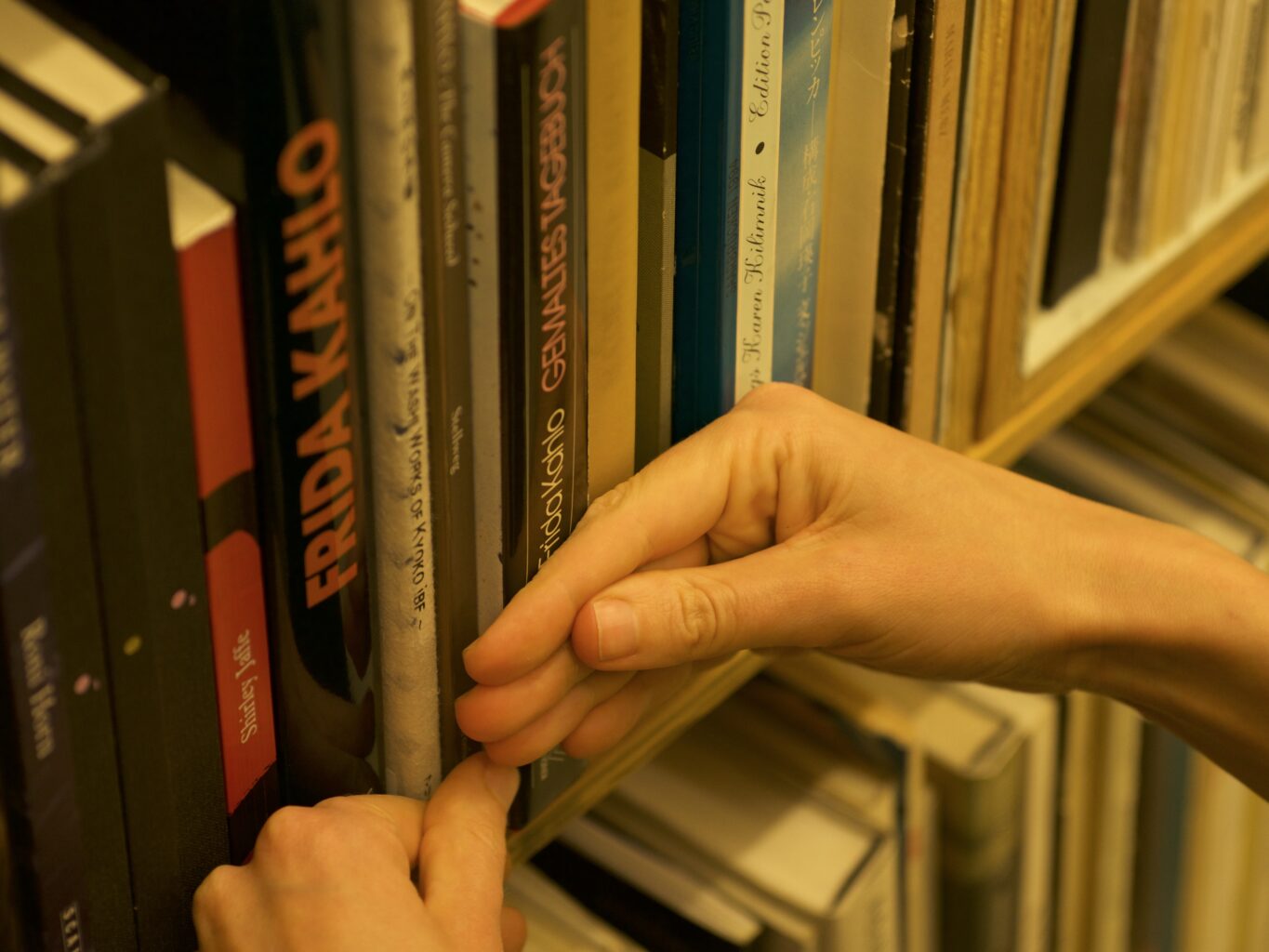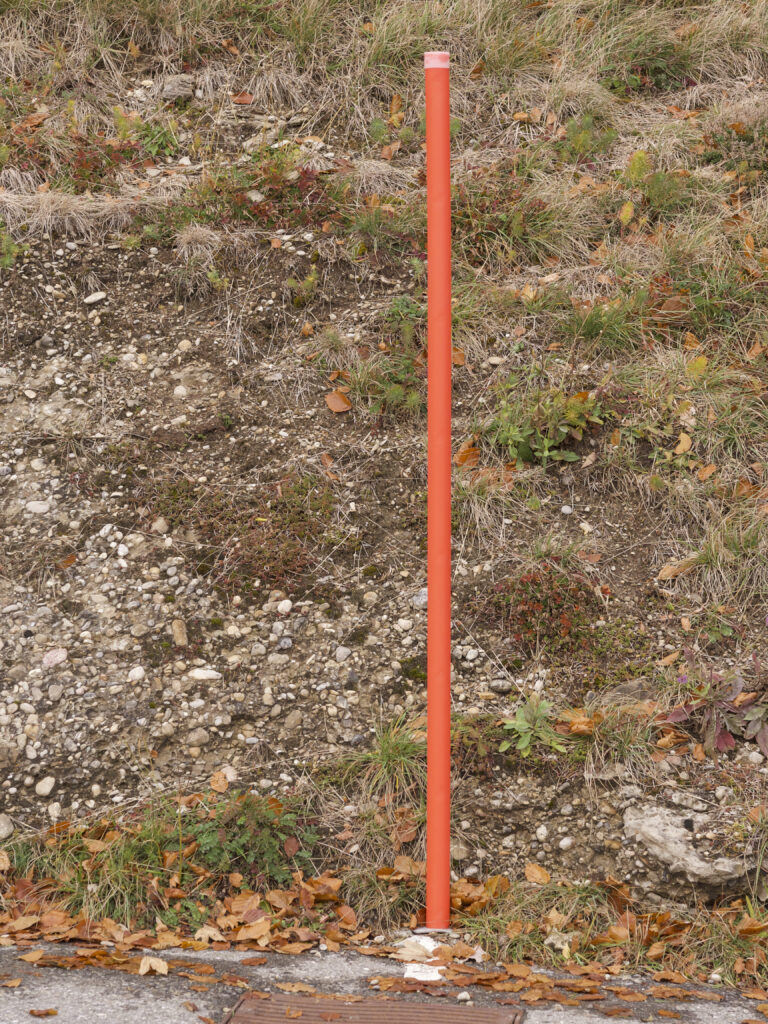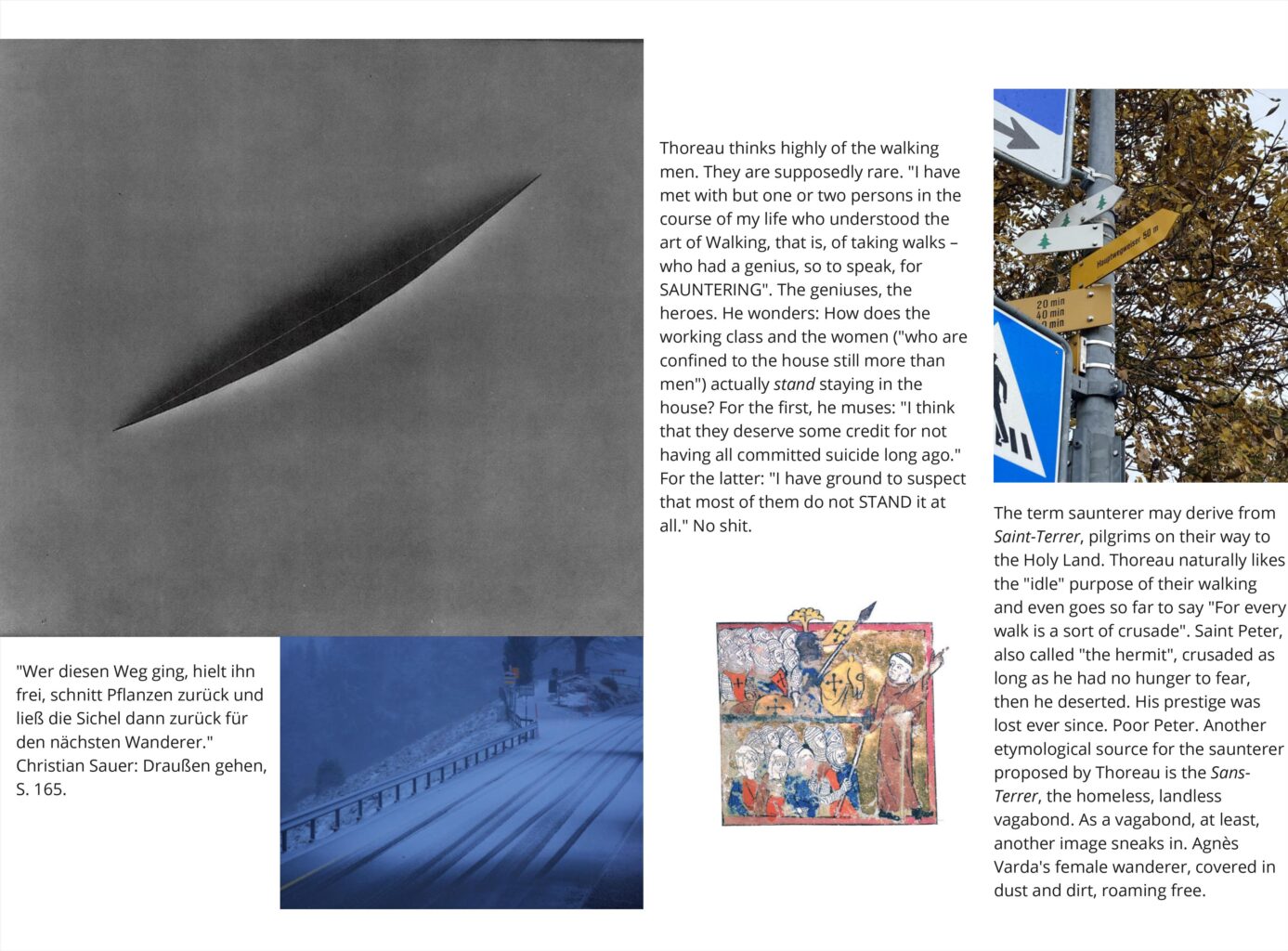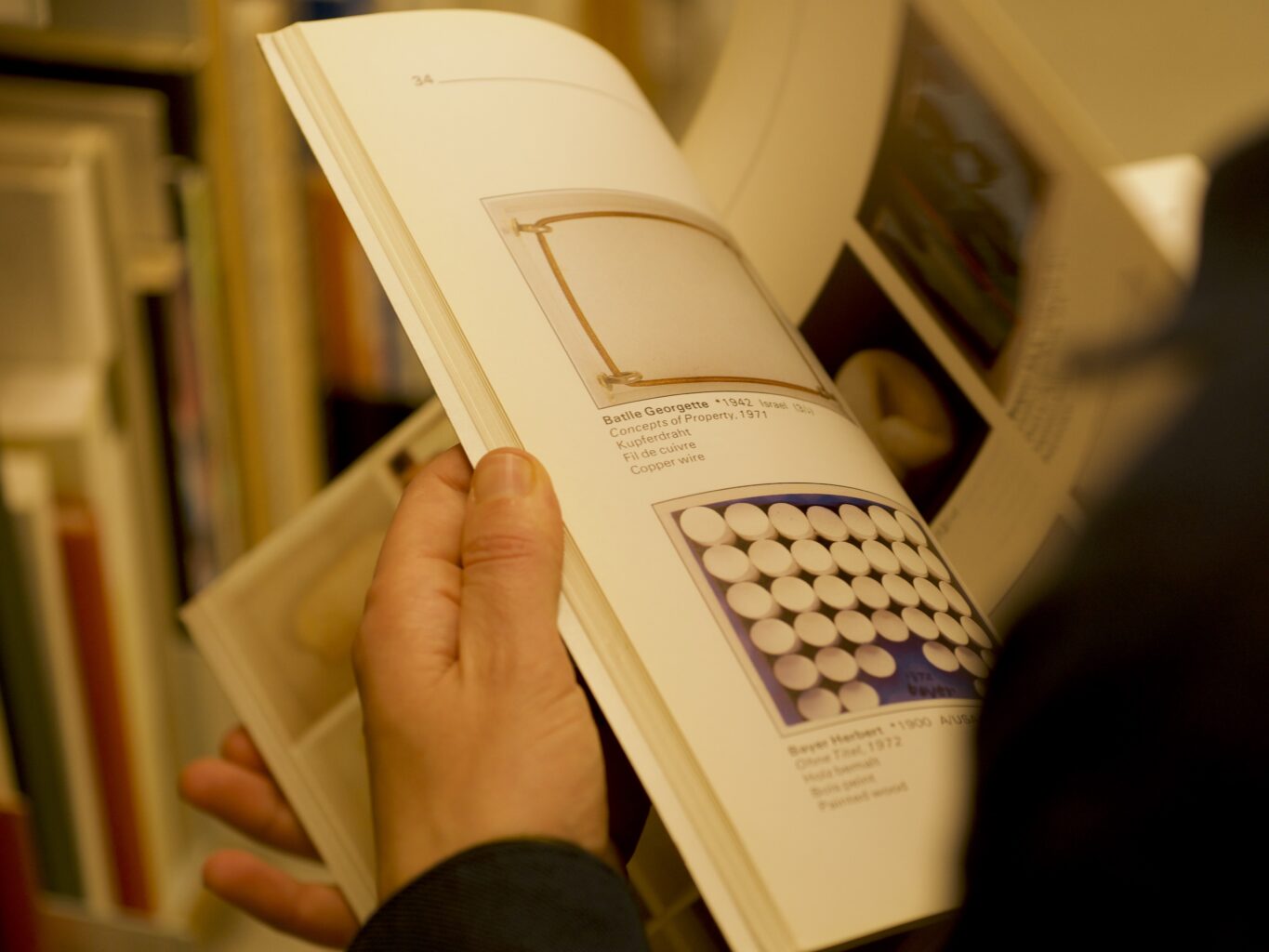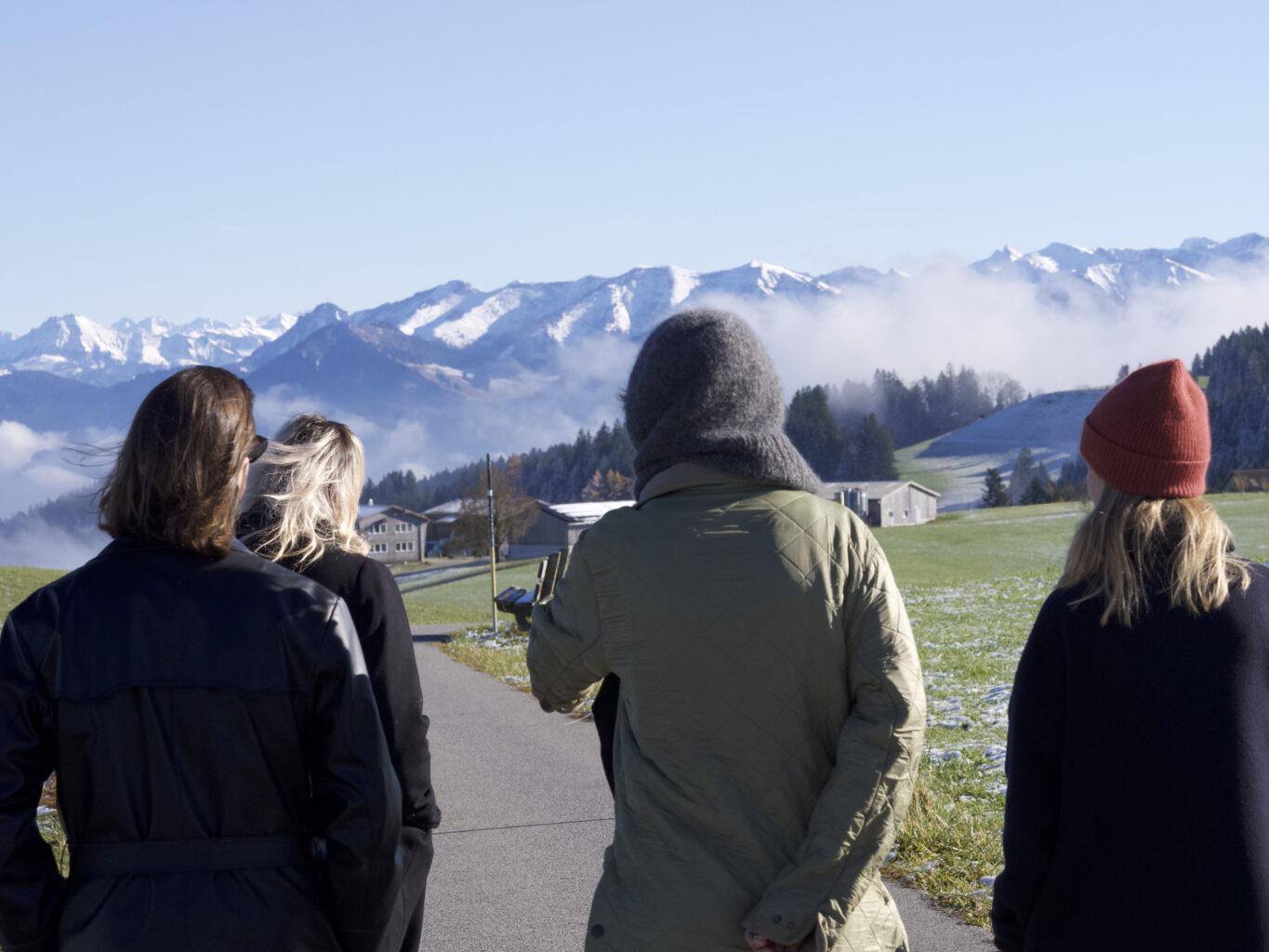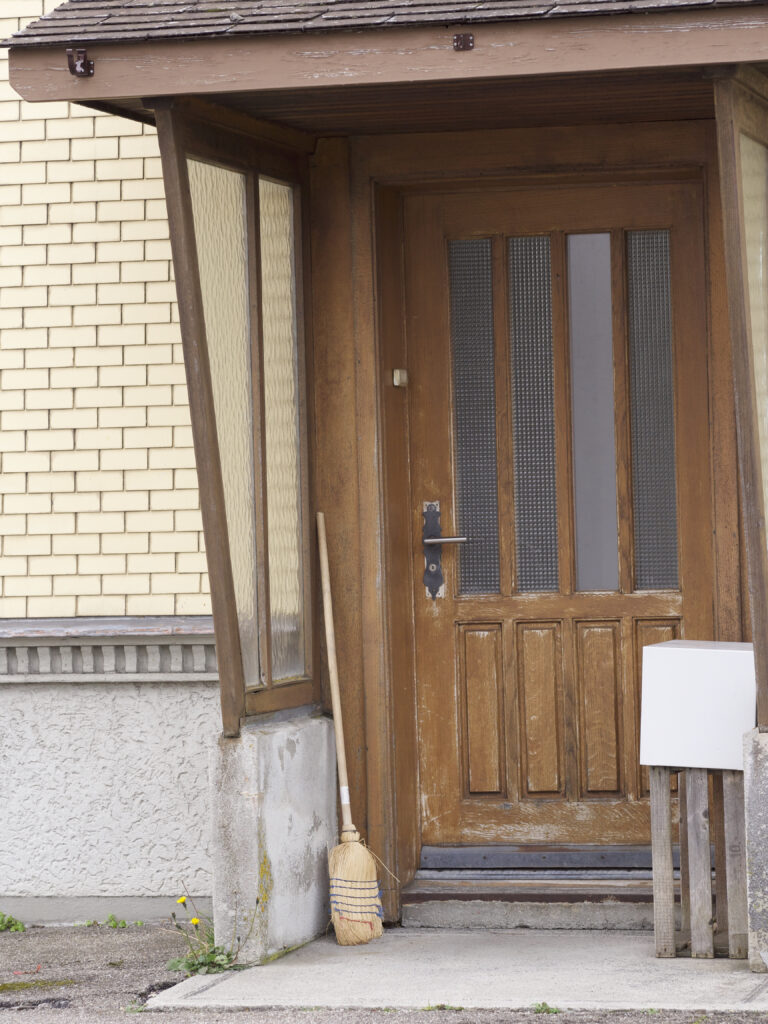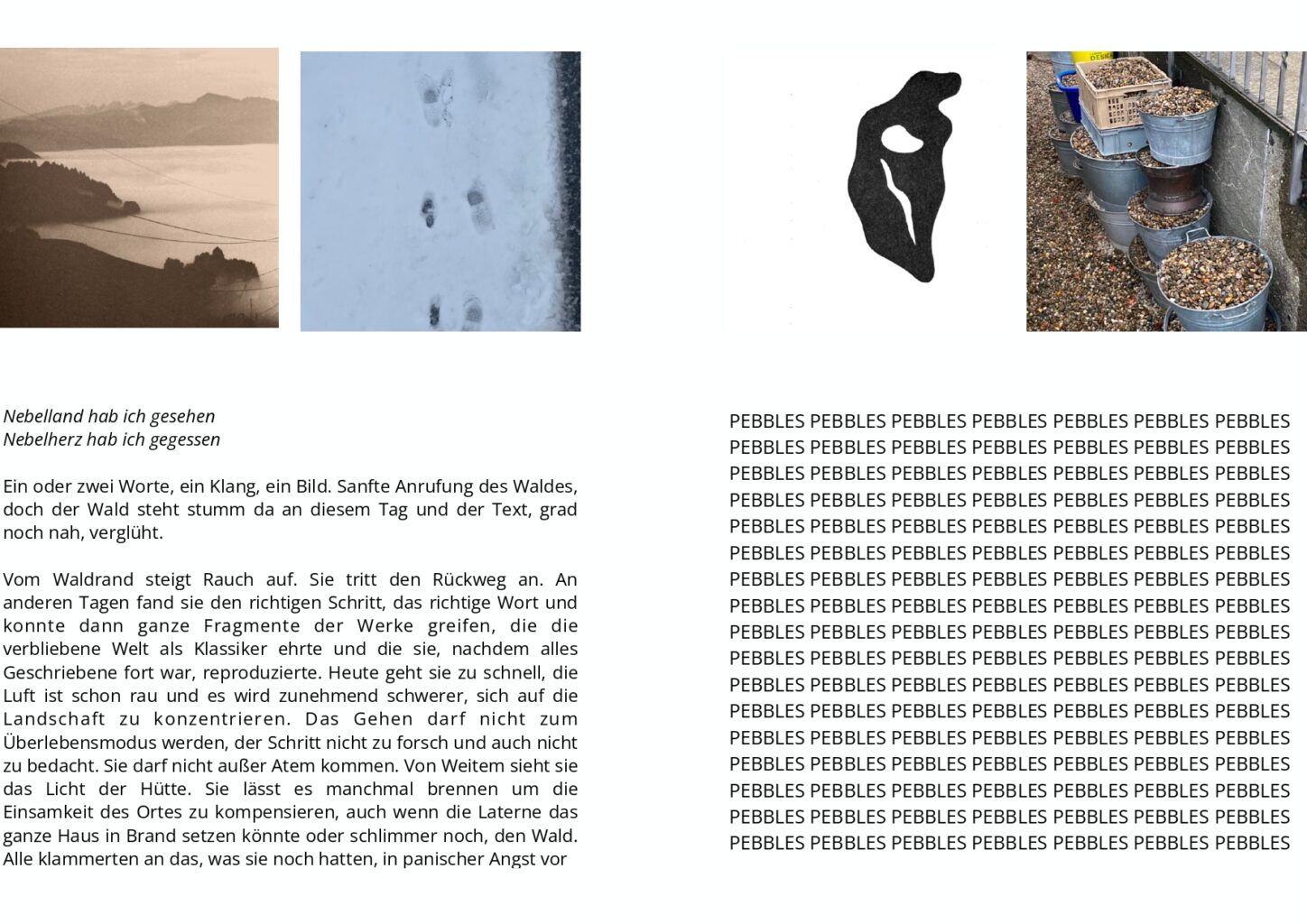During their stay at Alpenhof the hinterlands editorial team explored lines, links and uneven connections between library and landscape. Going back to the basics
of magazine making, they produced a small zine and used the process of making it to reflect not only on rural landscapes but also on their ways of working together.
The library as landscape
We might already wander through the library like through the fields and hills. It is its own landscape made up of boxes stacked with books, plastic dividers sticking out, some books presented on small stand-up displays, objects scattered throughout. What catches your attention? What do you feel drawn to?
What happened to these books before? They almost burned in a fire started from vinyl and paper, Peter tells us, while we sit in his cozy but cold attic-turned-living-room-turned-performance-space. We are hungry for his stories of how he met Andreas, what kind of person he was. This is what we wonder while we wander the corridors of that little box full of boxes that is the library. When it was itself still wandering, the library was again threatened when a graffiti called for violent pyromanic actions against gentrification places, such as the gallery where the library had traveled to for the time being – Mara tells us sitting in the midst of the collection, feeding us slowly with answers to our ravenous questions.
He was a memorizer, they say, his memories now contained and put in order. All that stuff is sorted, but the abundance, the mess, the cracks, the undergrowth remain.
The landscape as library
Week 1: We walked down from the crest and followed the surrounding paths. First into the unknown, with an open mind. Keeping an eye out and absorbing where the first steps took us. What we found: Animals, signs, wild herbs, cheese vending machines, tracks, stacks of wood, people, sights, smells, sounds and encounters. In this first period, walking was an activity in itself, without a purpose, simply heading off into the blue.
Week 2: Then a purpose for our walks was sought for, was found or emerged on its own. A dance performance in Trogen, a place to pick thyme for herbal tea, a visit to the Brockenhaus in Oberegg at a certain time. The passage was provided with prepositions. To and Towards and In Order To were added. We familiarized
ourselves with the place, became knowledgeable of it.
Week 3: Step by step, stack by stack, we sorted, categorized and documented. Repetition became a consciously chosen principle: the photo of the same valley each day, a familiar route to get some air. Patterns emerged through repetition and series were created. The self-set tracks were followed. The tracks of Andreas
and his relations to our surroundings.
Week 4: The patterns bring us back to the beginning. We want to lose ourselves again, to be guided by intuition. No more plans, just go for it and perceive anew. But is that still possible when you are already familiar with your surroundings? The trails we walked left traces. We take pleasure in tracing lines of thought, in finding connection lines, in drawing an outline. We observe how we seek order and templates ourselves, just to feel the urge to break them again.
Text: Maike Suhr, Hanna Döring, Freia Kuper
(hinterlands magazine editorial team)
November 2023

